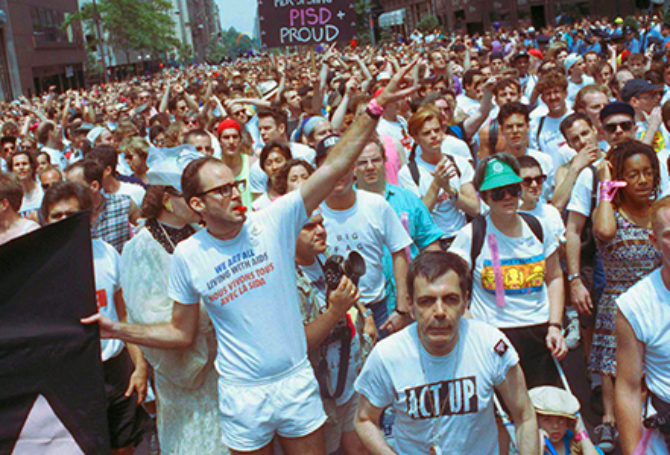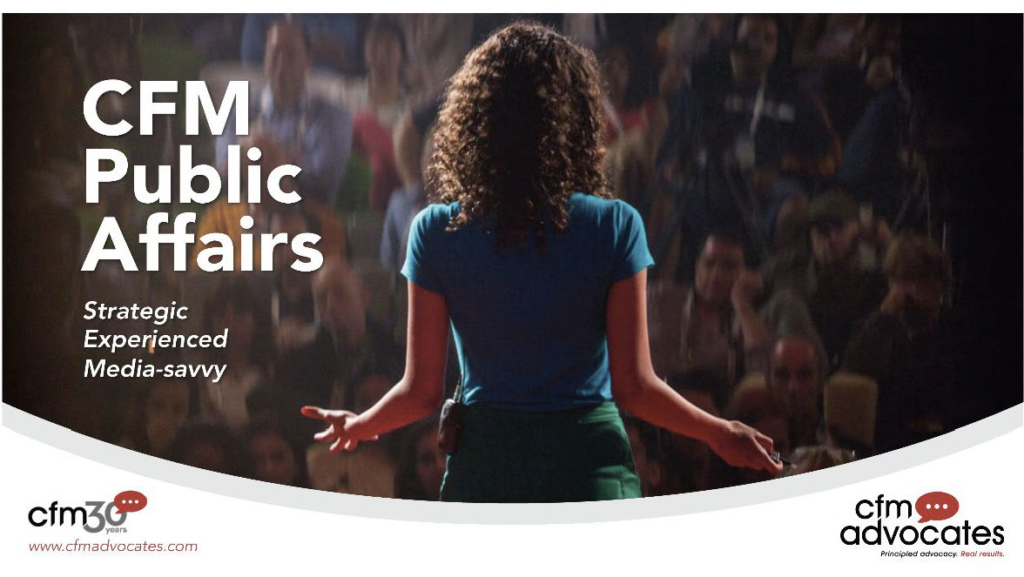
Changing minds is an increasingly difficult task in a sharply divided nation. Valuable lessons can be learned from the activists who changed attitudes toward people who contracted HIV/AIDS in the 1980s with an approach to advocacy that works.
Forty years ago, an HIV/AIDS diagnosis was the equivalent of a death sentence. Worse still, the disease was stigmatized as the wrath of God on gay men and women. Some people refused to have any contact with AIDS victims – or even sit on the same toilet seat – for fear of contracting the lethal virus. Families were split. AIDS victims were desperate.

The AIDS Coalition to Unleash Power (ACT UP) formed in 1987. ACT UP carried out vocal, visual and non-violent protests such as “die-ins” to raise awareness of AIDS and combat stigmas and myths. One of ACT UP’s leaders was Sarah Schulman, who was a budding novelist in New York when the movement began. She had cut her activist teeth in earlier protests against the Vietnam War and for abortion rights.
With the benefit of time and hindsight, Schulman observes there is a clear path from protest to success, which she shared in an NPR interview: “The biggest lesson is to design your solution, become the expert on your issue and build campaigns around things that are reasonable, winnable and doable.” She also urges “ferocious urgency” in advocacy.
To support her advice, Schulman points to ACT UP’s demonstration that closed down the Food and Drug Administration on a workday in 1998 to protest the federal agency’s sluggish review to allow AIDS victims access to experimental drugs.
As she described it, protesters didn’t blame anyone for the situation; instead they called for swift action on a potential solution (even though by then thousands had already died). Medical experts didn’t know if the drugs being tested would work, but AIDS victims, including those who contracted the virus from blood transfusions, had no other chance to survive. The protest succeeded in speeding experimental drug approval, which led to treatments that now keep people alive. They kept protesting to make sure effective treatments were affordable.
“I think any political movement, for it to be successful, has to be a place that makes the participants’ lives better,” Schulman says. “[The protest] was all about being effective. And it was filled with very young people who were very energetic and desperate for change.”
Even though the protesters were mainly gay men and women, Schulman said the movement drew from many sources of protest experience such as the Black Panthers, women’s peace movement and Latin American students who fought fascism in their home countries. “Those people came with political ideas and with ways of running movements that ACT UP really needed. And they had a huge impact on the movement.”
Advocacy managers can take a cue from Schulman on how to develop strategies and employ tactics to change minds. Whatever the challenge, leading with a solution is a critical first step. At their peril, too many advocacy efforts and protests focus on problems and offer few, if any, “reasonable, winnable and doable” solutions. ACT UP offered a disarming solution, volunteering to be guinea pigs for experimental drugs.
Identifying reasonable, winnable and doable solutions requires careful listening to both dug-in opponents and passionate advocates to discover the creases in disagreement. For example, there is grudging agreement police departments have been asked to do too much, as well as an emerging consensus that people with counseling backgrounds are best suited to respond to calls involving domestic violence or erratic street behavior.
ACT UP did its homework. It broke down the larger problem into chunks of the problem. Women addressed the absence of women from experimental drug trials and disease statistics. Other committees took on the issue of needle exchanges, minorities with AIDs and post hospitalization housing. There was a group that focused on synthesizing scientific findings regarding HIV in the belief that study is a stepstool to solutions.
Localizing solutions is also essential, Schulman says. “The movement against police violence, it’s different in every town city. It has local leaders and people are working with their municipalities or against the municipalities, but they are coming up with plans for where they live.” There are no cookie-cutter approaches to advocacy. Each situation requires a unique approach based on what’s possible to achieve.
Identifying reasonable, winnable and doable solutions requires careful listening to both dug-in opponents and passionate advocates to discover the creases in disagreement
As ACT UP demonstrated, there are times when the stakes are so dire that bold action is needed to capture attention. But attention is not an end to itself. Attention must be leveraged with a solid case and a reasonable solution that overwhelms counter-arguments and inaction. Especially entrenched positions may demand repeated attempts to capture attention in service of a solution that shouldn’t be ignored or dismissed.
Clients who simply want problems to go away can be frustrated if their advocates pursue all-or-nothing campaigns as opposed to win-win solutions. Gauging what’s doable is an essential part of advocacy, which then allows advocates to pursue a reasonable path with a higher percentage of winnability. Patience.
ACT UP, which initially was regarded as repulsive and vulgar for its tactics, has become a model for contemporary protests that seek to unite diverse and disparate interests in support of a goal. Columbia law professor Kendall Thomas has observed about the Black Lives Matter movement, “Black activists and their allies now understand that the struggle for Black freedom has to make connections across many different constituencies and concerns that used to be seen as different and disconnected.”
In many ways, what Schulman encourages is what we call principled advocacy. Protesting to protest is pointless. Protests and advocacy campaigns should have a point in the form of a solution to a social injustice or a policy gone awry. Success should be measured, as Schulman suggests, by winning the day with a reasonable alternative to injustice or bad policy. Protests are an avenue to change minds to those reasonable alternatives and open hearts to why those alternatives are needed.




